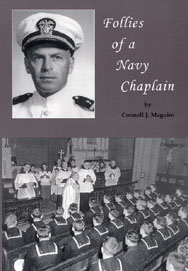©2014, Aaron Elson
I interviewed Ed Spahr in 1991, when he told me about this lieutenant he hadn't seen since the war. The following year, Spahr and the lieutenant, along with two other members of their crew, were reunited.
I was a tank gunner most of the time. I canít quote names of where we were, I donít recollect, but I hit a Tiger tank one day at least three times with an armor-piercing shell and never touched him. He just kept on coming. You could hear the shell going when it left the tank. It didnít penetrate. Then my loader accidentally threw a white phosphorous shell in, and I hit that tank right in the front end, and he stopped. Some of the crew came out. They thought they were hit and penetrated and they thought they were on fire. We used to use the white phosphorous shell for markers. It burns and a puff of white smoke explodes. They were good for hunting range. We had the old type sights where you guessed the range, and we used to use what we called bracketing shots. Some gunners would use high explosive to get their bracket. The first shell, you could see it hitting, now if it would hit, say, 200 yards short, the gunner would raise his elevation 400 yards, and if he shot over the target, then he would drop down 200 yards. Thatís bracketing. And if you didnít get him on the third shot, youíd better find a hole to get into because he was then going to be shooting at you.
These scars on my hand I got one time, they had antiaircraft guns, I think they were 20 millimeters, and they hit our tank I donít know how many times. They didnít penetrate, they werenít powerful enough, but on the inside of the tank a little round spot would get cherry red, and the paint would sometimes catch on fire.
We got the piece of equipment that was firing at us. I think there were four guns mounted on it, that they used for antiaircraft, but they turned it on our tank, and these little spots about four or five inches in diameter would turn cherry red and the paint would catch fire. Thatís what made these little white spots on my hand.
I was wounded on the inside of my left arm. Lieutenant Gifford was our tank commander. Our tank got knocked out, and luckily, we all got out of the tank. They hit us somewhere in the track, and busted the track, so that if weíd have kept going weíd have just gone around in a circle because it only had one track to pull it.
After we got hit, Lieutenant Gifford stuck his head out, and a machine gun bullet struck him around one eye. He had blood all over. When he got out of the tank, I donít think he thought he was hurt as bad as he was, and he stepped behind the tank, away from the incoming, they were firing machine guns on us, trying to get the personnel that were in our tank, but we were behind the tank. Lieutenant Gifford tossed me his camera and said: "Take a picture of me."
So Iím standing there with my hands up taking the picture, thatís the only way I could have gotten hit in a spot like that, I had to have my arms up. It just felt like a bee sting. I felt the same thing in my face, but that was just a little piece of metal, something out of the machine gun projectile that hit me there. It was no bigger than a small match head that they picked out, it was probably the shell casing off of a 30-caliber bullet.
I really didnít think I was hit until the medic asked to see my hand because when I dropped my arm the blood would drop off my fingers, and he asked to see my hand and he wiped it off and said, "I canít see where the bloodís coming from." And then, all at once, he said, "Itís coming down your arm. Take off your shirt." And then there this was, I was bleeding like a stuck pig.
I havenít seen Lieutenant Gifford since. He was all right, but he never came back to the company after that.



